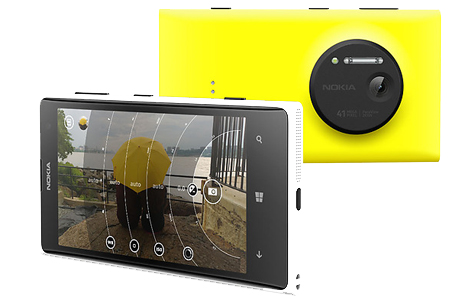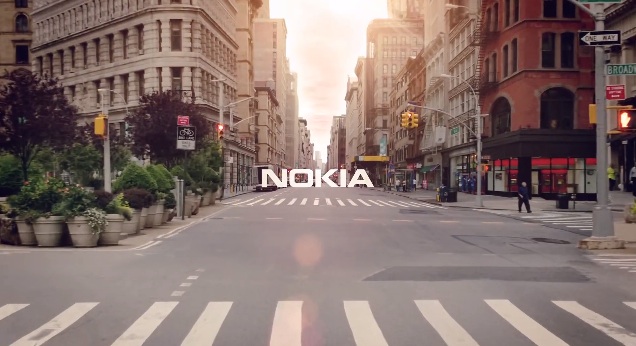How we shot NY 41x41
This week we presented NY 41x41, the world's first short film shot using the SuperZoom technique. The author of the work was the American director Paul Trillo , who used only Nokia Lumia 1020 when filming . At the time of this writing, the number of views is approaching one hundred thousand.
We could not miss the chance and not tell you about how this film was made. From the description of the video, you can understand that it was made from 41 photos. But how exactly? We prepared a short video about the shooting and asked a few questions to Paul - all this under the cut.
The film lasts about 52 seconds. How long did it take to shoot and edit and what difficulties did you encounter?
The shooting dates were extremely tight. I had only one attempt, since I was limited to sunrise. We shot from about 3 to 7 in the morning and checked the sunrise schedule to understand the position of the sun in the next 15 minutes. Sunrise is a very important point, as the lighting changes every 2 minutes and every quarter should be photographed as quickly as possible.
The installation took a total of about 2 weeks. True, quite a lot of time was spent researching the “superzoom” technique itself just before shooting.
You mentioned that the film “is essentially an image within an image repeated 41 times.” How did the process of gluing the image take place and why does the film look so seamless?
The main part of the work is a careful adjustment of the disappearing point and horizon on each frame. The catch that complicates this process lies in the distortions from the lens that occur at the edges of each frame. The closer the objects are to the camera, the larger they appear. When you zoom in on a photo, the frame is smoothed out. Therefore, the whole process comes down to finding the point at which the two photos converge. Each frame should be perfectly crafted to look like a continuation of the other. In some cases, the buildings and the sky had to be finished to get rid of the seams.
Obviously, you have the necessary experience to shoot such videos. What about others? Can an untrained Nokia Lumia 1020 user do something similar? If so, how?
I have to admit - I had to tinker with it before I learned to use this technique. However, anyone familiar with After Effects and with a well-aimed eye can figure it out. For a quick introduction to the super-zoom technique, I recommend Andrew Kramer's training materials .

In addition, a lot depends on how you capture your original frames. Post-processing will be much easier if you make sure that each subsequent frame was shot at an equal distance from the previous one, from the same angle and with the same focal length. I urge all owners of the Lumia 1020 to watch our off-screen video and try to shoot their own “super zoom”.
New York is one of the busiest cities in the world, but it’s very calm in your movie. How did you get rid of cars and passers-by?
This happened partly consciously, partly logistically. I did the first test shooting at the worst time, perhaps between 2 and 5 o’clock in the afternoon. And Manhattan met me in all his might, making filming a nightmare. The frames did not overlap each other due to the constant flow of cars blocking the road. It was only a test that helped me hone my technique, but it convinced me that I needed to shoot in the early morning. During the shooting, I only had to make sure that the car was not within the quarter that I am renting now. All subsequent quarters will still be shot in other frames. The lack of city bustle definitely adds to the film's surrealism.

You spent a lot of time with Nokia Lumia 1020. What practical advice could you give to novice filmmakers filming on Lumia?
The first thing I noticed was the ability to control focus. Other things, like white balance settings, are also great. The ability to manually control all of these settings will allow you to maximize your distance from what a regular video shot on your phone looks like. And definitely buy a Camera Grip. With it, you can easily mount the phone on a tripod, plus with it you can look at the battery indicator much less often.
How would you use our smartphone?
PS
Attention ! Open pre-order for Nokia Lumia 1020 .
We could not miss the chance and not tell you about how this film was made. From the description of the video, you can understand that it was made from 41 photos. But how exactly? We prepared a short video about the shooting and asked a few questions to Paul - all this under the cut.
The film lasts about 52 seconds. How long did it take to shoot and edit and what difficulties did you encounter?
The shooting dates were extremely tight. I had only one attempt, since I was limited to sunrise. We shot from about 3 to 7 in the morning and checked the sunrise schedule to understand the position of the sun in the next 15 minutes. Sunrise is a very important point, as the lighting changes every 2 minutes and every quarter should be photographed as quickly as possible.
The installation took a total of about 2 weeks. True, quite a lot of time was spent researching the “superzoom” technique itself just before shooting.
You mentioned that the film “is essentially an image within an image repeated 41 times.” How did the process of gluing the image take place and why does the film look so seamless?
The main part of the work is a careful adjustment of the disappearing point and horizon on each frame. The catch that complicates this process lies in the distortions from the lens that occur at the edges of each frame. The closer the objects are to the camera, the larger they appear. When you zoom in on a photo, the frame is smoothed out. Therefore, the whole process comes down to finding the point at which the two photos converge. Each frame should be perfectly crafted to look like a continuation of the other. In some cases, the buildings and the sky had to be finished to get rid of the seams.
Obviously, you have the necessary experience to shoot such videos. What about others? Can an untrained Nokia Lumia 1020 user do something similar? If so, how?
I have to admit - I had to tinker with it before I learned to use this technique. However, anyone familiar with After Effects and with a well-aimed eye can figure it out. For a quick introduction to the super-zoom technique, I recommend Andrew Kramer's training materials .

In addition, a lot depends on how you capture your original frames. Post-processing will be much easier if you make sure that each subsequent frame was shot at an equal distance from the previous one, from the same angle and with the same focal length. I urge all owners of the Lumia 1020 to watch our off-screen video and try to shoot their own “super zoom”.
New York is one of the busiest cities in the world, but it’s very calm in your movie. How did you get rid of cars and passers-by?
This happened partly consciously, partly logistically. I did the first test shooting at the worst time, perhaps between 2 and 5 o’clock in the afternoon. And Manhattan met me in all his might, making filming a nightmare. The frames did not overlap each other due to the constant flow of cars blocking the road. It was only a test that helped me hone my technique, but it convinced me that I needed to shoot in the early morning. During the shooting, I only had to make sure that the car was not within the quarter that I am renting now. All subsequent quarters will still be shot in other frames. The lack of city bustle definitely adds to the film's surrealism.

You spent a lot of time with Nokia Lumia 1020. What practical advice could you give to novice filmmakers filming on Lumia?
The first thing I noticed was the ability to control focus. Other things, like white balance settings, are also great. The ability to manually control all of these settings will allow you to maximize your distance from what a regular video shot on your phone looks like. And definitely buy a Camera Grip. With it, you can easily mount the phone on a tripod, plus with it you can look at the battery indicator much less often.
How would you use our smartphone?
PS
Attention ! Open pre-order for Nokia Lumia 1020 .
